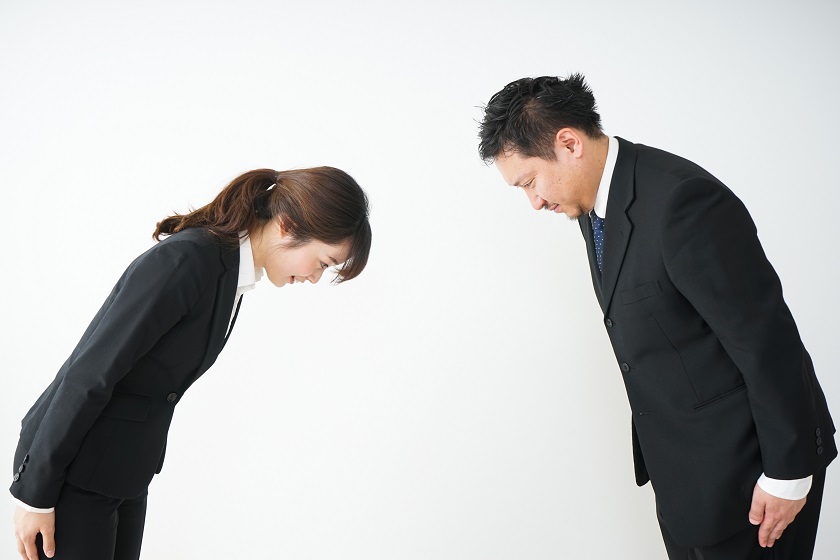People from different cultures have specific social norms ingrained in them from a young age. For example, tattoos are frowned upon in Japan, but they are widely accepted in America. While travelers don’t have to know the specifics of every culture, it’s important to learn the basics of culture to experience it.
Japanese Etiquette: Rules Every Visitor Should Know

Learning about new cultures can foster tolerance and acceptance, allowing others to understand why people act in a certain way. Japan has many etiquette rules and taboos that can be helpful for travelers to learn before visiting there. Travelers utilizing Japan’s railway system will find an etiquette structure that is ingrained in the society through posters, and modeled by many fellow passengers. Though you don’t have to learn all of the customs, knowing how to act when visiting Japan will show that you respect the culture, which the Japanese will greatly appreciate.
Japanese Etiquette Golden Rule
Japan has many different social cues and etiquette rules to be aware of. It can be hard to remember when to bow, take off your shoes, or even how to eat. Luckily, Japanese people are aware that visitors can have a hard time when first visiting Japan. The number one rule to remember is to be as respectful as possible. Japanese people are extremely polite and welcoming, and understand that newcomers may not be well-versed in the local social rules and customs.
When in doubt, ask for clarification and be courteous. You can always look up specific customs using the internet if you get confused, using mobile Wi-Fi hotspot devices. These will ensure that you will have internet access no matter where you travel in Japan.
Japanese Bowing Etiquette
Bowing is a part of everyday life in Japan. Knowing when and how to bow can seem overwhelming at first, since it is not common in every culture. In many instances, bowing takes the place of handshakes, which can be difficult to get used to if you are a visitor. Luckily, many Japanese are used to shaking hands when meeting non-Japanese.

Bowing also shows other signs of emotions, like:
- Showing thanks;
- Starting or ending a class, meeting, or ceremony;
- Worshipping someone or something;
- Saying goodbye;
- Apologizing;
- Making a request;
- And asking for a favor.
How to Bow in Japan
Bowing, or “ojigi,” was taught to warriors when they encountered samurai. Then, around the 1600s, this warrior etiquette spread throughout communities and became prevalent in modern Japanese society. Bowing represents respect and emphasizes social rank. In many aspects, such as Japanese businesses, adults will take extra care to teach bowing as it is a defining quality of adulthood.
Though the Japanese don’t expect visitors to know the intricacies of bowing, it will earn you respect if you show some knowledge of the practice. Bowing may seem simple, however, many occasions call for different types of bows.
Standing vs. Sitting
When bowing, there are two positions to start from: standing (seiritsu) and sitting (seiza). When performing seiritsu, it’s important to keep these practices in mind:
- Look straight ahead;
- Men should position their feet one and a half inches apart. Women should stand with their feet together;
- Place your hands diagonally on your thighs;
- Do not rest your elbows on your body;
- Ensure your back is straight;
- Breathe in when moving into the bow, exhale as you hold it, and inhale on the way up.
If you are starting in seiza, which is expected in almost all formal situations, you’ll need to keep these practices in mind:
- Kneel into position. Men should kneel one leg at a time while women should put both knees on the ground at the same time (if possible);
- Keep your feet flat on the floor, toes pointing behind you;
- Rest on your calves or heels;
- Rest your hands on your thighs;
- Sit up straight;
- Bow as you would when standing.
Specific Bowing Occasions
While bowing is intricate in its most basic form, there are also different kinds of bows for different occasions. They include:
- Casual situations, like interacting with friends and family, call for a “respectful beam” with your eyes or a slight bow with your head, like a nod.
- Greeting acquaintances, where a natural-paced, small bow is allowed. This is not a deep bow and can be done either sitting or standing.
- Semi-formal situations, the most common situation you’ll encounter, requires a seated bow with your eyes to the floor. You will bend forward at a 30-degree angle, either placing your palms on the floor if you are a man or your fingertips if you are a woman. Then you will hold the bow for one second before returning to the starting position.
- Interacting with high-ranking officials means the bow will be deeper as well as longer — usually between three and four seconds when seated. This shows respect. Bending forward at a 45-degree angle, you will bow and return to the standing position for the duration of one breath.
- Deeply reverent situations, such as dramatic apologies or audiences with the emperor, requires a much deeper and longer bow. You will bend forward at a 70-degree angle for two and a half seconds, hold the bow for three seconds, then return to the normal position for four seconds.
Common Mistakes With Bowing
There are also common mistakes associated with bowing:
- Do not put your palms together. This is no longer a common practice in Japan, outside of worshipping.
- Do not bow while walking. You must always stop to bow.
- Do not bow while sitting in a chair. This is deemed as too casual. Typically, if someone bows to you while standing, you should stand too.
- Do not bow while speaking. This can be seen as rude.
- Do not bow while frustrated or angry, as bowing is a sign of respect.
Japanese Footwear Etiquette
If you are traveling through Japan, you may have noticed that you are required to remove your outdoor footwear when entering certain establishments. The Japanese have observed this custom for many years. Since the Japanese developed the custom of eating meals and sleeping on tatami mats, they take their outdoor shoes off to keep their spaces clean.

It is easy to know where to put outdoor footwear when entering a Japanese home or traditional establishment. Most buildings will have a “genkan,” or an entryway, which is divided into a lower area where people can change out of their shoes. The elevated area that leads into the house or building is typically made out of a different material, indicating that it is the start of the house and indoor footwear should be worn from that point.
Other places that require indoor footwear are:
- Restaurants;
- Traditional ryokan, a type of Japanese inn that features tatami-matted rooms;
- The indoor sections of temples, castles, and other historic buildings.
Since entering someone’s house barefoot is considered ill-mannered, hosts provide slippers to accommodate guests. Socks are worn with these slippers to maintain hygiene. This is just one etiquette rule when visiting Japanese homes. Other tips for footwear etiquette include:
- Different slippers are available to use when going to the bathroom;
- Shoes are not worn in tatami rooms since the mats are hard to clean;
- Do not step into the house with outdoor footwear or bare feet;
- Try to avoid stepping onto the genkan’s lower area in socks;
- Point your outdoor footwear towards the door after removing them;
- Wear shoes that can be easily removed, as you may take them off multiple times a day.
Japanese Tipping Etiquette
Dining in Japan has certain etiquette rules, especially involving tipping. Contrary to other countries, tipping is not common in Japan. This is because Japanese culture is strongly rooted in dignity and hard work. Good service should encompass these traits and represent the standard in service. Tipping for the standard is viewed as unnecessary. Trying to leave a tip will most likely confuse, so a general rule is to avoid tipping.
However, there are two exceptions:
- Guides and interpreters may not demand tips but it is acceptable to offer them;
- Ryokans accept tips if you ask them for a special favor or if you received exceptional service — however, a tip is still not required.
If you do plan to leave a tip, make sure to place the money into an envelope and use both hands to present it, as taking money out of your wallet can seem crass. If you do not plan on tipping, there are alternatives forms of gratification:
- A small gift from your home;
- Treating someone to coffee or tea;
- Local food specialties;
- Local souvenirs;
- A nod or a small bow;
- Saying “Gochisosama deshita,” which means “Thank you for the meal.”
As stated before, the Japanese understand that travellers may not know every single etiquette rule — they expect you to make mistakes. However, it does show appreciation and admiration for their culture when a traveler takes the time to learn their social norms, and it can enhance your visit by being immersed in Japanese customs.
Ready to experience Japanese customs and etiquette for yourself? Book your Japan Rail Pass now for your travels!

.png)



